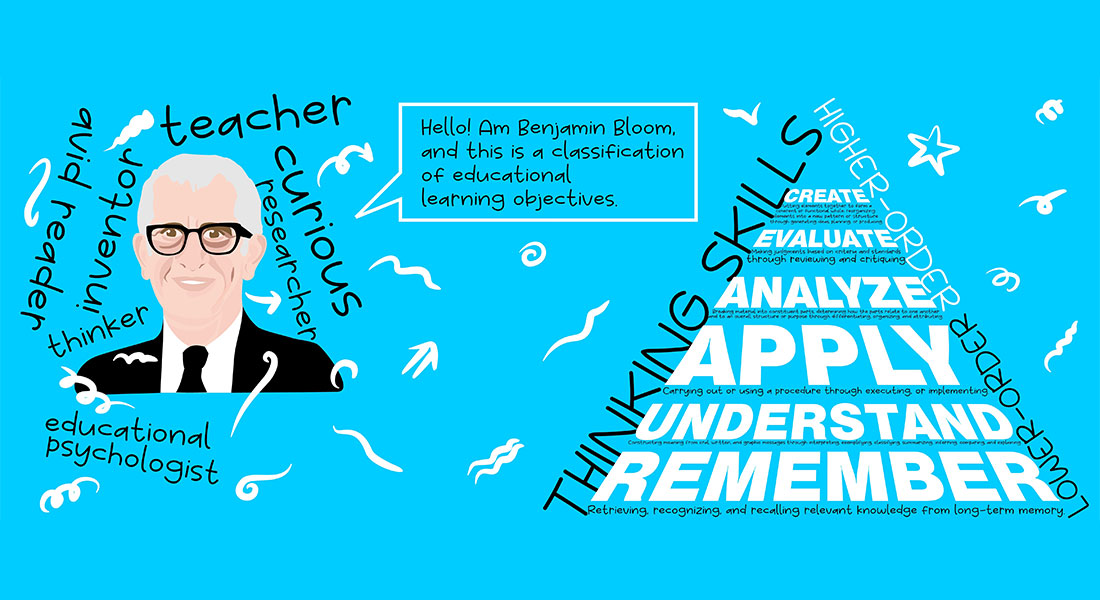Explained! How to Boost Online Training ROI with Revised Bloom’s Taxonomy
Want to create effective online training courses that truly engages learners? The revised Bloom's Taxonomy can be the key to unlocking success. Continue reading to explore this framework and design impactful online training modules that meet your needs and requirements.

Are you an instructional designer (ID) trying to design effective online training programs that ensure your learners think about, retain and apply the information they’ve learned? Well, the first step for you is to focus on setting robust learning objectives and map them with the course design and development.
Further, getting acquaint with Bloom’s Taxonomy is a promising way to set learning objectives. This renowned framework breaks down learning into six levels, each building on the last, and is a powerful tool for creating engaging online training content that meets learner needs. This is an ideal framework that Instructional Designers (IDs) need to keep in mind to be able to design engaging and impactful eLearning material.
In this post, we’ll explore all six levels of Bloom’s Taxonomy and how IDs can use them to set up learning objectives for an impactful online training experience foster lasting knowledge retention. So buckle up, because we’re about to take your eLearning skills to new heights!
The Revised Bloom’s Taxonomy has Six Levels to Help Create Engaging Courses!
The levels include:
- Remembering
- Understanding
- Applying
- Analyzing
- Evaluating
- Creating
Before trying to know more about Bloom’s Taxonomy, let’s discuss about learning objectives
Learning Objectives
Learning objectives (LOs) play a very important role in the design and development of effective training programs. LOs help IDs to clearly define what learners should be able to do after completing the training. This further helps to ensure that the training provided is focused on the most important skills, knowledge, and abilities that the learners need to acquire in order to be successful.
Let us now see how the six levels of Revised Bloom’s Taxonomy can be used to set learning objectives –

The Six Levels of Revised Bloom’s Taxonomy and How to Set LOs for Each
1. Remembering: This level is all about remembering information about the specific topic being discussed. With this as the learning objective, the IDs should focus on setting a premise for the learning – built on the learners’ previous knowledge and understanding of the topic.
For instance, in an eLearning course on a new product, the premise can be set by talking about the previous product. The learners’ attention can be drawn by asking them to point out the shortcomings of the previous product.
2. Understanding: This level is all about being able to interpret and explain information. To fulfill this learning objective, IDs can use interactive and immersive videos, infographics, etc to help the learners understand better.
3. Applying: For this level, the instructional designers have to be able to plan activities so the learners get to use information in a real-world context. One of the best ways to do so is to use scenario-based learning activities and simulations.
For instance, in a safety training program, the learners can be given scenarios so they can choose the right action to overcome it.
4. Analyzing: This level of the Taxonomy involves the learners breaking down their learning into smaller, component parts. This step is important because for the learners to be able to learn something new, they have to be able to analyze it and understand how it works.
Based on this learning outcome, IDs can use case studies, group discussions or forum discussions.
→ Access Now: Sticky Learning for Application Back on the Job? [Webinar Recording]
5. Evaluation: This step involves making judgments about the value of information and learning that is being provided. Here, the learning objective is to help learners evaluate the knowledge that they have gained to see if it fits their needs. For this, the ID can introduce a blended approach for evaluation including instructor feedback, self-assessment and/or peer review.
6. Creating: Finally, the ‘creating’ level is about the learners being able to use the knowledge gained to create something new. For instance, a sales training program should be able to help the learner close a deal. Providing the learners with real-world scenarios, practice sessions, role-play activities can be helpful.
Let us now understand how to apply this framework in online training:
Applying the Revised Bloom’s Taxonomy in Online Training

When it comes to online training, one of the most important things to consider is how you can apply the Revised Bloom’s Taxonomy to maximize your employees’ learning. This comprehensive guide on the revised taxonomy will show you how to do just that!
The first step is to understand what the Revised Bloom’s Taxonomy is and how it can be applied to online learning. The Revised Bloom’s Taxonomy consists of six levels of cognitive skills: knowledge, comprehension, application, analysis, synthesis, and evaluation. Each level requires a different type of thinking and engages learners in different ways.
To apply the Revised Bloom’s Taxonomy in online training, you need to design your eLearning courses and activities in such a way that they target all six levels of cognitive skills. Here are some tips on how to do this:
- Use a variety of question types in your eLearning assessments. This will ensure that learners are engaging with the material at all levels of cognition.
- Build a layered approach so your content gradually builds from simple concepts to more complex ones. This will help learners master each level before moving on to the next.
- Encourage your employees to reflect on their learning progress and the process on the whole. This approach will help them become more aware of what they are doing and what can be done for better results.
Wrapping Up
In conclusion, the revised Bloom’s Taxonomy is an important tool to consider when developing online training. By incorporating each of its categories into your content design and delivery, you can ensure that your training will effectively engage learners in meaningful activities and conversations.
Want to make your eLearning modules more engaging? This webinar outlines some Instructional Design strategies you should. Access the recording now





